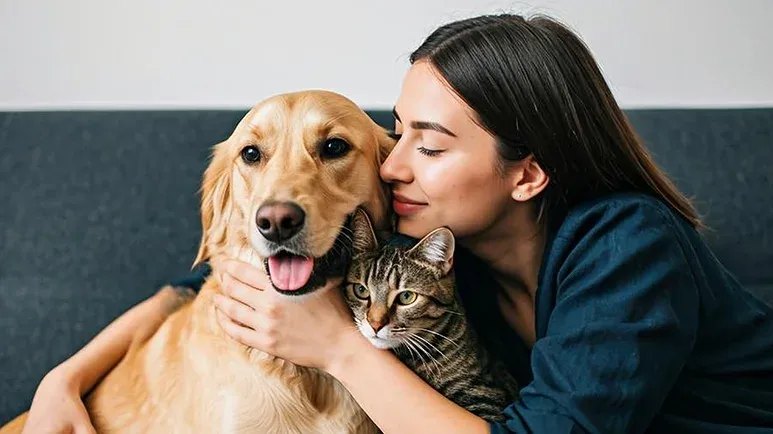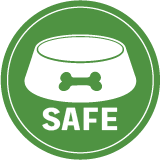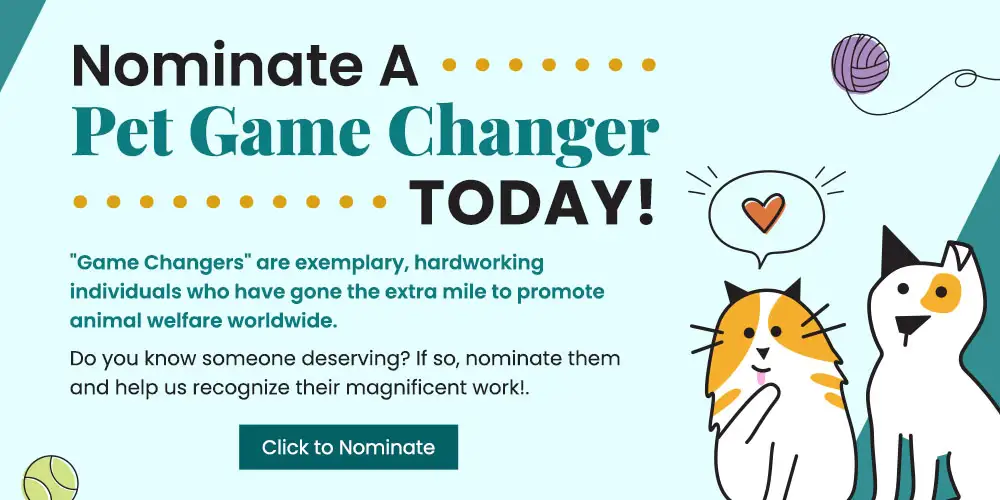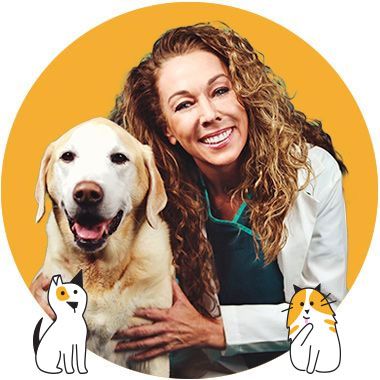The Missing Piece in Your Pet's Wellness Routine
It's not something you find in a bottle or at the pet store; it's something much more meaningful. Find out how this important aspect of pet care helps create a stronger bond and promote lasting health and happiness for both of you.

STORY AT-A-GLANCE
- True wellness includes how we communicate with our pets. Conscious Compassionate Connection (CCC) can profoundly influence their emotional and energetic health, not just their physical care
- Inspired by Ayurvedic wisdom and modern psychology, CCC means being fully present, emotionally aware, and respectful of your pet's unique mind, body, spirit, and energy
- Your pets constantly communicate through posture, expression, and energy. Tuning into these subtle signs helps build trust and strengthens your bond on a deeper, soulful level
- Great healing begins when pet guardians and practitioners prioritize empathy, authenticity, and open dialogue, fostering safety, mutual respect, and understanding for both pets and their people
- When you listen intuitively, respect your pet's individuality, and trust your inner wisdom, you become their strongest advocate, creating space for healing, growth, and connection
As a devoted pet parent, you strive to provide the best possible care for your animal companions. You invest in high-quality, species-appropriate food, schedule regular veterinary visits, ensure daily exercise, and offer affection and attention to nurture their physical and emotional well-being.
Yet, despite these thoughtful efforts, there remains an often-overlooked component that has the potential to significantly enhance your pets' overall health and happiness — The way you connect and communicate with your pets.
True wellness extends beyond meeting basic needs. It involves cultivating a deep, empathetic relationship rooted in understanding, trust, and respect. By adopting a more conscious and compassionate approach to interacting with your pets, you can create an environment that supports not only their physical health but also their emotional and spiritual well-being.
Communication That Heals — More Than Just Words
Pets may not speak our language, but they're constantly communicating. A wagging tail, a low whine, flattened ears, or a relaxed body are all ways your pet tells you what they're feeling. When you learn to listen — not just hear — you become the kind of guardian who truly understands their needs. This is where the concept of Conscious Compassionate Communication (CCC) comes in.1
CCC is a way of connecting that goes deeper than commands or cues. Rooted in ancient Ayurvedic wisdom and shaped by modern psychology, CCC honors every living being's mind, body, spirit, and energy. It encourages you to be fully present, emotionally open, and deeply respectful in every interaction.
CCC is communicating with more than just words — it's being able to recognize your pet's emotions, spiritual needs, and energetic shifts. That's the power of conscious, compassionate connection.
Understanding the Full Picture — Mind, Body, Spirit, and Energy
Just like you, your pets are complex, emotional beings. When you approach your pet holistically, you're caring for their whole being, instead of solving problems as they come up.
- The emotional world of your pet — Your pet has thoughts and feelings. They experience a range of emotions, including joy, fear, boredom, excitement, and grief. A big part of CCC is recognizing this inner emotional world.
Practice mindful listening when your pet communicates with you. Are they acting out because they're "bad" or because they're anxious, lonely, or confused? A calm, present mind helps you interpret their behavior through the lens of compassion. - Nonverbal clues can speak volumes — Body language is the main way animals express themselves. A dog that lowers its head may be showing submission or discomfort. A cat that flicks its tail might be annoyed or overstimulated.
Tune into your pet's physical cues. Respond with your body language — gentle hands, a relaxed stance, or a calm voice. This nonverbal connection is how trust grows. - Respecting the soul within — Whether or not you consider yourself spiritual, there's something undeniably sacred about the bond between people and animals. When you honor your pet's spirit, you're seeing them as more than a pet — you're seeing them as a being with unique value and purpose. This means respecting their individuality, their boundaries, and their journey, even when it's hard.
- Energy acts as an invisible bond — Animals are incredibly sensitive to energy. Your stress, anxiety, or joy doesn't go unnoticed. CCC invites you to become aware of the energy you bring into the room. Are you calm? Rushed? Frustrated? Practicing emotional regulation and positive intent around your pet fosters a sense of safety. It tells them, "You're safe. I'm here. I see you."
The Ripple Effect of Compassionate Connection
In a world that often feels rushed, disconnected, and reactive, the simple act of slowing down, listening with your heart, and connecting soul to soul with your pet can be revolutionary. When you practice CCC with your pet, the benefits go far beyond your household.
- Your pet feels safer, more loved, and more secure.
- You become more intuitive, calm, and compassionate.
- Your relationships with others deepen as you apply the same empathy and mindfulness.
How to Practice CCC in Everyday Pet Care
You don't need to be a professional communicator to apply these principles at home. Here are practical ways you can start today.
- Be present — Put down your phone, take a breath, and simply sit with your pet. Observe without trying to fix, teach, or entertain. This quiet connection builds trust and deepens your bond.
- Don't be quick to assume — You may think you know what your pet needs, but it's better to pause and observe. Observe how your pet reacts to new food, supplements, or treatments. Are they interested? Hesitant? Being attuned to their preferences demonstrates respect for their autonomy and agency.
- Create space for expression — Sometimes your pet just needs you to hold space. This is especially true during illness, behavioral challenges, or end-of-life moments. Don't rush in to fix everything. Sit with their feelings — and yours. Sometimes the greatest gift is your non-judgmental presence.
- Practice energy awareness — Take a moment before you engage with your pet. Check in with yourself. Are you tense? Frustrated? Distracted? Shift your energy before approaching them, especially during training or care routines. Your pet feels more secure when your energy is calm and grounded.
- Honor individuality — Every pet is different. What worked for one dog may not work for another. Just like people, pets have personalities, preferences, and comfort zones. Respecting these differences helps them thrive.
Client-Centered Care Means Listening with Your Heart
Imagine you're grieving a loss, facing a tough decision, or feeling uncertain about your next step. Now imagine someone telling you what to do without asking how you feel. Uncomfortable, right?
That's why a client-centered approach — a concept born from psychologist Carl Rogers is so powerful in pet wellness too.2 In this context, you, the pet parent, and your pet are the "clients." The key principle is that healing starts by listening, not lecturing.
Whether you're working with a vet, trainer, animal communicator, or holistic healer, the best support happens when your needs and your pet's needs are at the center, not the provider's personal beliefs or preferred techniques. Here's what a client-centered, empathy-based approach looks like in action:
- Acceptance — Meeting you and your pet exactly where you are — no judgment.
- Empathy — Genuinely trying to understand your experiences from your point of view.
- Authenticity — Offering support without power dynamics, ego, or preaching.
Healing happens when you feel safe, seen, and heard — and the same is true for your pet.
The Healing Power of Listening
Many holistic pet practitioners incorporate animal communication into their care approach. This is about creating a respectful, telepathic connection where you receive intuitive impressions, emotions, or images from your pet. In this model, communication is a two-way street. You're not just reading your pet — you're conversing with them.
This method gives your pet a voice, allowing them to share how they feel about situations, symptoms, or transitions. A good animal communicator will:
- Ask permission before offering healing
- Explain what's happening during the session
- Translate your pet's messages with empathy and neutrality
- Avoid pushing spiritual or emotional beliefs onto you
Whether you choose to work with a professional or practice intuitive listening on your own, animal communication can provide insight, comfort, and a deeper connection.
Grief, Loss, and Holding Sacred Space
Losing a beloved pet is one of the most painful experiences a pet parent can face. And in times of grief, how you're supported matters deeply.
The client-centered approach reminds us not to rush grief or try to "fix" it. True healing happens when others hold space with empathy and respect — not when they offer platitudes or push spiritual beliefs.
This is especially important if someone sends well-meaning messages that don't align with your values. A compassionate practitioner takes care to honor your worldview, not impose their own. If you're grieving, remember:
- Your pain is valid.
- You don't need to explain or justify your feelings.
- You have the right to receive support that honors your beliefs and emotional needs.
And if you're supporting someone else through pet loss, ask yourself — Am I here to be a wise "fixer," or a loving companion on their journey?
Empowerment Over Dependence
One of the most beautiful aspects of client-centered, conscious communication is that it empowers you to be your pet's best advocate.
Instead of relying completely on professionals to tell you what to do, you become a confident, informed partner in your pet's wellness. The best practitioners don't create dependence — they educate, encourage, and uplift you. This empowerment extends to your pet too. When you give them choices, honor their preferences, and treat them as full beings — not just pets — you're fostering their growth, health, and happiness.
It's Not About Getting It Perfect — It's About Showing Up
You don't have to be an expert on Ayurveda, animal communication, or holistic care to begin this journey. You just need to be present, open, and willing.
This approach isn't always fast or easy. It asks you to be patient, and to listen more than you speak. But the rewards are immense — a stronger bond, deeper understanding, and a sense of connection that transforms both your lives.










